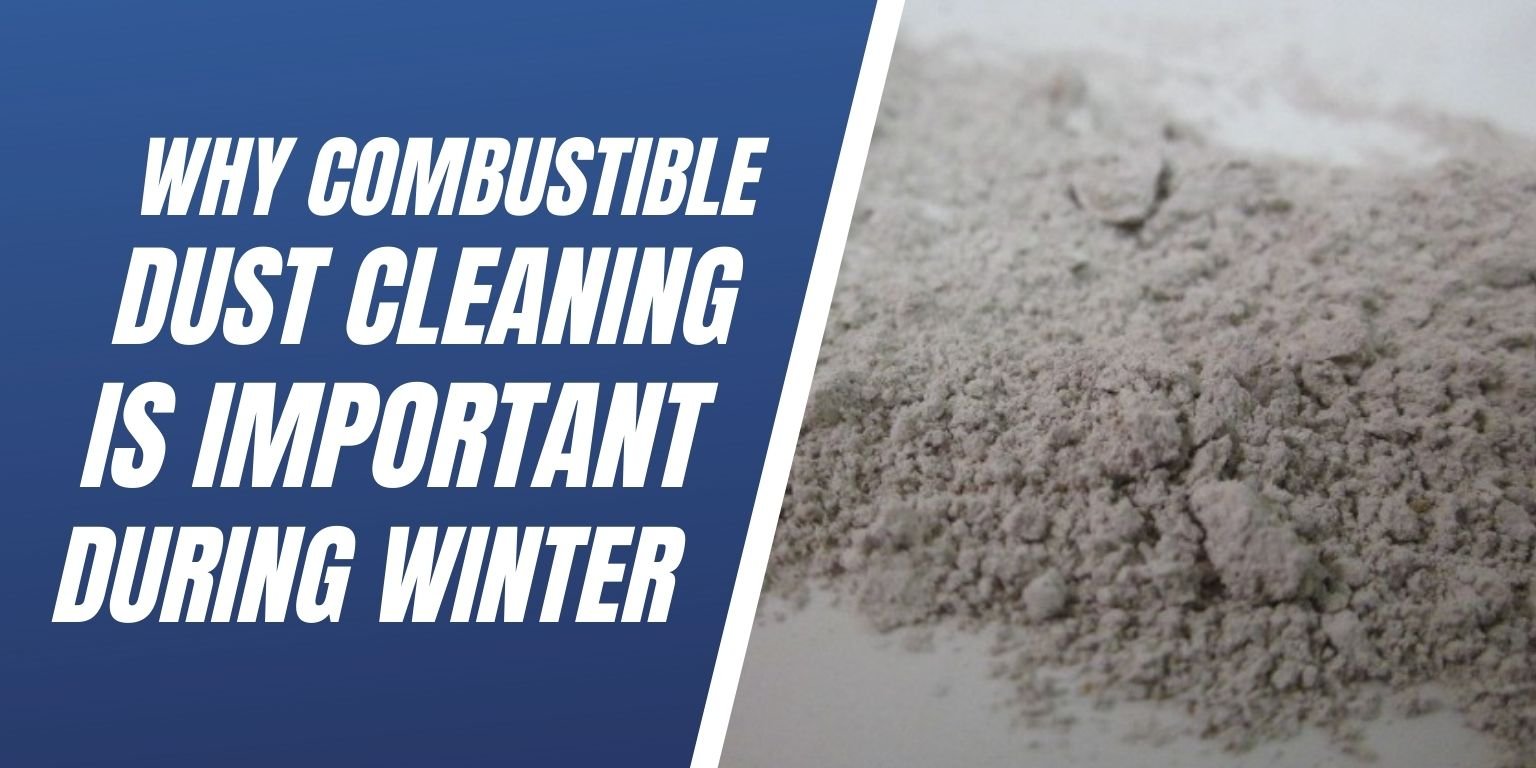
With warmer temperatures experienced nationwide this summer and fall, if felt like winter would be delayed. But now that winter has finally settled in, we realize snow, ice and cold weather aren’t the only hazards that are present during these months. In fact, the potential for dust explosions increases during winter. As a manufacturing facility, you produce a lot of dust, and after a while, that dust begins to accumulate on the surfaces of machinery the floor, rafters and ceiling, and even the ductwork. Therefore, combustible dust cleaning is important during winter.
What Is Combustible Dust?
According to the National Fire Protection Association (NFPA) 654, defines combustible dust as “A combustible particulate solid that presents a fire or deflagration hazard when suspended in air or some other oxidizing medium over a range of concentrations, regardless of particle size or shape.”
This is why making sure that combustible dust removal is a part of your winter cleaning plan will help decrease the risk of a fire explosion. Not to mention, it will help keep a clean and safe work environment for your employees!
What Causes a Combustible Dust Explosion?
According to the Occupational Health and Safety Administration (OSHA), “A dust explosion occurs when a confined and concentrated combustible dust cloud comes into contact with an ignition source. A primary explosion is the first point where an explosion occurs and is often an isolated incident. A secondary explosion occurs when the primary explosion pressure disturbs dust that has collected in the workplace, resulting in a much more extensive explosion.”
The empty space of the building is full of oxidants such as oxygen, which provide fuel for a fire to burn. When the dust is disrupted from air movement in the building, exhaust from machinery, using compressed air, or even from smaller fires or explosions nearby it disperses into a dust cloud. Since the dust cloud is being contained by the walls of the building, an ignition source is created (usually from heat, or sparks) within reach of the cloud, which ignites and causes an explosion. Unfortunately, combustible dust cleaning services are regularly not a part of an industrial facility’s cleaning plan, because not enough people realize that the dust created from manufacturing can become an explosion hazard.
Why are Combustible Dust Explosions More Likely to Occur in Winter?
For a fire to burn it needs three elements present simultaneously: Fuel, Ignition, and Oxygen – also known as the “Fire Triangle”. But for a combustible dust explosion, two additional elements are needed to form what is known as the “Dust Explosion Pentagon”. These two elements are Confinement and Dispersion. They are created when the fuel, in this case combustible dust, is spread out as a dust cloud within a closed area, such as a factory or warehouse.
- Lack of Ventilation
When the heating system is running during the winter, the building’s occupants are likely to keep doors and windows closed to conserve heat. In warmer weather, bay doors or building windows might be open to let in fresh air, and fans running to maintain a cool airflow. This extra airflow can keep dust levels at a minimum and reduce the hazard of a dust explosion. In winter, the lack of extra ventilation may allow dust levels to increase.
- Low Humidity Levels
Humidity levels are lower in winter, as cold air holds less moisture than warm air. If a building uses a forced-air heating system, the air’s humidity level becomes even lower due to water evaporation (water vapor burning out). Lower humidity levels mean dryer dust, making it easier for dust particles to disperse. Lower humidity also lowers the temperature required for an ignition.
- Improper / Changed Cleaning Techniques
Common housekeeping practices in manufacturing facilities may rely on water. But when temperatures drop below freezing, cleaning with water is not always an option. Depending on the facility, cleaning practices also tend to be less frequent in cold weather. The (combustible) dust is either undisturbed or accumulates until water-based cleaning can be used again. Facility managers may turn to alternate cleaning techniques, that unknowingly, may be hazardous to use around combustible dust! One of those techniques is using compressed air. Compressed air is not a recommended dust cleaning option– regardless of season– as it creates a dangerous dust cloud!
To safely clean and rid your facility of combustible dust during winter, contact a professional industrial cleaning company whose technicians are experienced, knowledgeable, and trained in how to clean combustible dust.
Hughes Environmental technicians are OSHA-trained and experienced in cleaning combustible dust. Hughes Environmental uses equipment approved for combustible dust cleaning, such as intrinsically safe vacuums and grounded hoses.
For a free estimate or to schedule a combustible dust cleaning for your facility, Contact Us Here or call: 888-845-3952.

